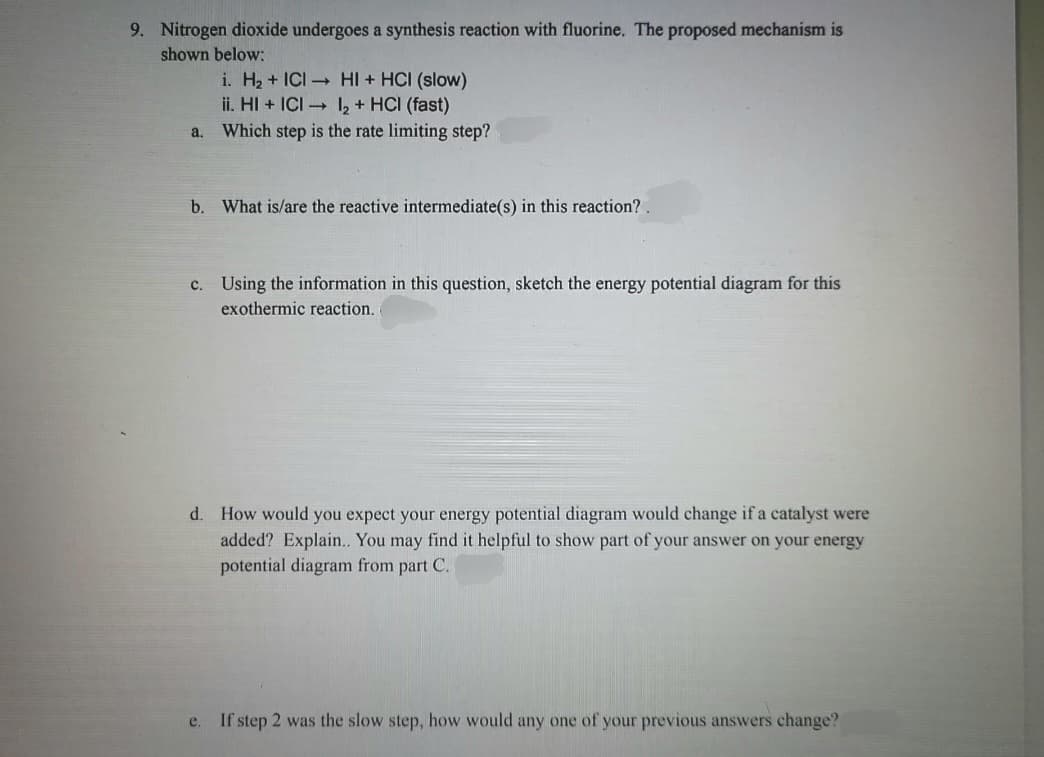9. Nitrogen dioxide undergoes a synthesis reaction with fluorine. The proposed mechanism is shown below: i. H2 + ICI HI + HCI (slow) ii. HI + ICI 2 + HCI (fast) a. Which step is the rate limiting step? b. What is/are the reactive intermediate(s) in this reaction?. c. Using the information in this question, sketch the energy potential diagram for this exothermic reaction. c d. How would you expect your energy potential diagram would change if a catalyst were added? Explain.. You may find it helpful to show part of your answer on your energy potential diagram from part C. e. If step 2 was the slow step, how would any one of your previous answers change?
Catalysis and Enzymatic Reactions
Catalysis is the kind of chemical reaction in which the rate (speed) of a reaction is enhanced by the catalyst which is not consumed during the process of reaction and afterward it is removed when the catalyst is not used to make up the impurity in the product. The enzymatic reaction is the reaction that is catalyzed via enzymes.
Lock And Key Model
The lock-and-key model is used to describe the catalytic enzyme activity, based on the interaction between enzyme and substrate. This model considers the lock as an enzyme and the key as a substrate to explain this model. The concept of how a unique distinct key only can have the access to open a particular lock resembles how the specific substrate can only fit into the particular active site of the enzyme. This is significant in understanding the intermolecular interaction between proteins and plays a vital role in drug interaction.

Step by step
Solved in 5 steps with 2 images









